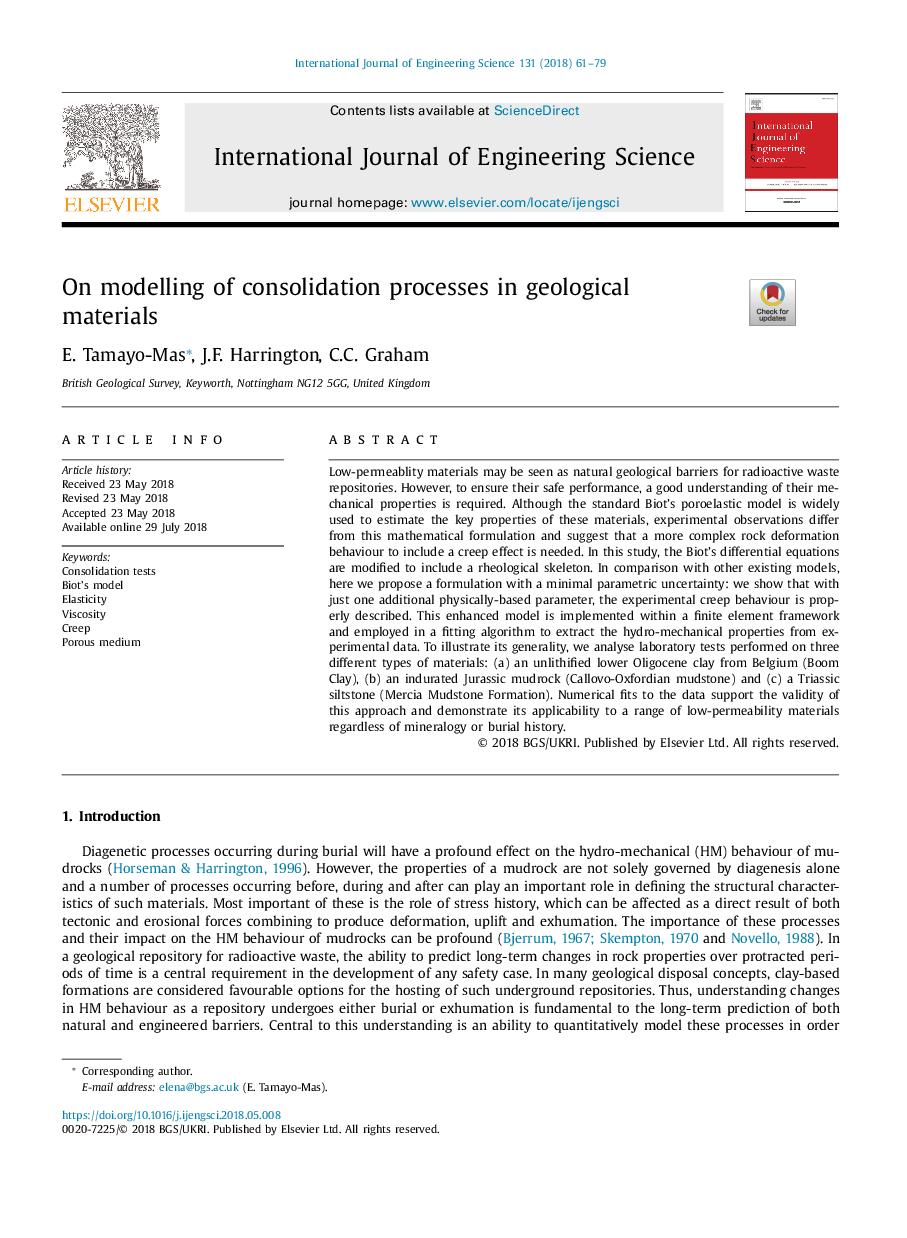| Article ID | Journal | Published Year | Pages | File Type |
|---|---|---|---|---|
| 7216228 | International Journal of Engineering Science | 2018 | 19 Pages |
Abstract
Low-permeablity materials may be seen as natural geological barriers for radioactive waste repositories. However, to ensure their safe performance, a good understanding of their mechanical properties is required. Although the standard Biot's poroelastic model is widely used to estimate the key properties of these materials, experimental observations differ from this mathematical formulation and suggest that a more complex rock deformation behaviour to include a creep effect is needed. In this study, the Biot's differential equations are modified to include a rheological skeleton. In comparison with other existing models, here we propose a formulation with a minimal parametric uncertainty: we show that with just one additional physically-based parameter, the experimental creep behaviour is properly described. This enhanced model is implemented within a finite element framework and employed in a fitting algorithm to extract the hydro-mechanical properties from experimental data. To illustrate its generality, we analyse laboratory tests performed on three different types of materials: (a) an unlithified lower Oligocene clay from Belgium (Boom Clay), (b) an indurated Jurassic mudrock (Callovo-Oxfordian mudstone) and (c) a Triassic siltstone (Mercia Mudstone Formation). Numerical fits to the data support the validity of this approach and demonstrate its applicability to a range of low-permeability materials regardless of mineralogy or burial history.
Related Topics
Physical Sciences and Engineering
Engineering
Engineering (General)
Authors
E. Tamayo-Mas, J.F. Harrington, C.C. Graham,
